
Renovating the forest garden

It's
tough to think long term when you're struggling to keep your short term
affairs in order. That could mean not putting money in your
retirement account because you can barely pay the bills. Or, in
the Walden Effect world, it could mean neglecting your perennials
because the annual garden is all you can handle.
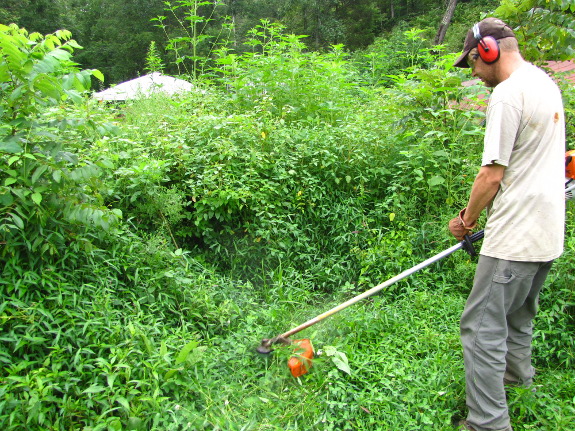
The photo at the top of
this post shows our poor forest garden,
untouched since I halfway mulched a few areas in the winter.
Somewhere deep in that tangle, two baby apple trees, a baby peach, a
medium-sized nectarine, a plum, and a young hazel bush are hiding,
along with four tomato
plants, some perennial herbs, and a whole bunch of butternuts and
naked-seed
pumpkins. Okay, the last two aren't really hiding --- as annuals,
I gave them attention, so they are happily mulched, although starting
to run into the weeds.
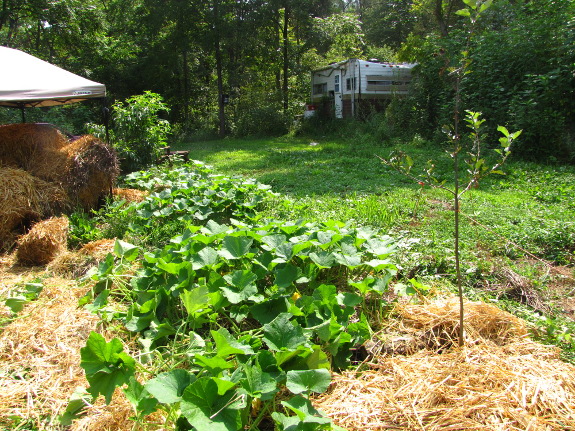
The problem with this
area is that the mower can't get into it easily,
due to various experiments on my part combined with the remnants of a
brush pile. In southwest Virginia, unchecked weeds can grow
nearly twenty feet tall in just a few months --- and that's the annuals
that start from seed each spring. Enter Mark's
ninja
blade, combined with
my hand-weeding, mulching, and directing. ("No, don't cut
there! That's a tree! Cut this area again, lower!")
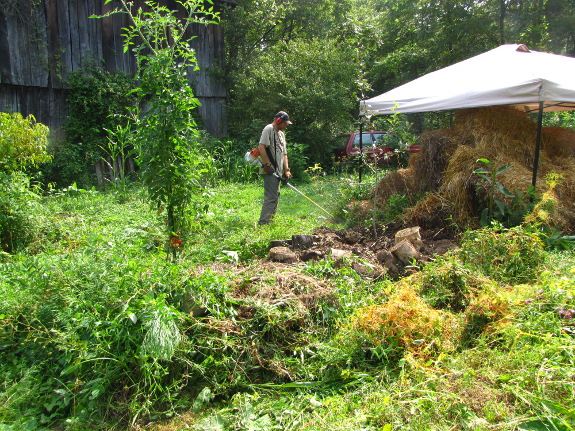
Four and a half man
hours later, the worst half of the forest garden has been
reclaimed. Now our seedling fruit trees won't have to compete
with ragweed taller than they are, with dodder sucking out their juices,
and with a general lack of love. Plus, I can delete the constant
low-level stress of worrying about the forest garden's inhabitants.
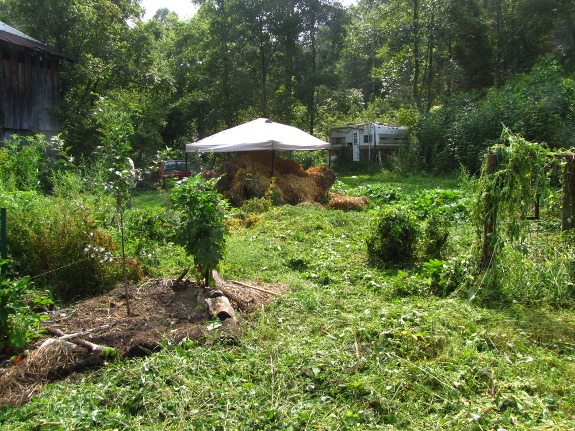
In retrospect, the one
thing I did right in the forest garden this year was planting
four tomatoes amid the trees. We love tomatoes so much that I
wasn't willing to risk any of the harvest, which is what finally pushed
me over the edge to putting forest garden renovation on the list.
Maybe that's a bit like setting up automatic, monthly direct deposits
into your retirement account?
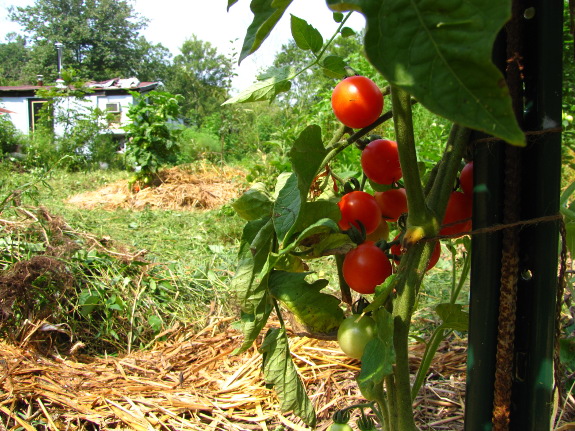
Want more in-depth information? Browse through our books.
Or explore more posts by date or by subject.
About us: Anna Hess and Mark Hamilton spent over a decade living self-sufficiently in the mountains of Virginia before moving north to start over from scratch in the foothills of Ohio. They've experimented with permaculture, no-till gardening, trailersteading, home-based microbusinesses and much more, writing about their adventures in both blogs and books.
Want to be notified when new comments are posted on this page? Click on the RSS button after you add a comment to subscribe to the comment feed, or simply check the box beside "email replies to me" while writing your comment.

I've been using straw mulch a lot in my garden this year with good success so far, but I've heard that it can attract slugs and snails because they can hide under its relatively loose canopy over the dirt. Have you run into this problem at all?
Sarah Boulder Creek CA
Charity --- That blade is an awesome tool for this type of application (but be careful!) I've found it very useful to hand weed around the things you want first. That way you don't get into tunnel vision and cut down something you like once you get the power of the weedeater in your hand.
Sarah --- I've read about people having snail and slug problems with any kind of mulch, but I haven't had any trouble. Granted, we do seem to have more snails and slugs this year...but since I started out seeing none and now see one every tenth bed or so, I don't think that's anything to worry about. I suspect the problem is very location and/or climate specific, so I can't vouch for how straw will do in your area.
I suspect the problem is very location and/or climate specific, so I can't vouch for how straw will do in your area.
If you had an Austrian scythe you would ENJOY getting your weed growth under control. They are addictive! Have a look at www.scytheconnection.com. Using a scythe is unbelievably easy; sharpening it requires a little skill, but again very easy when you know how. As both of you have a scientific approach to life, you will master it with ease. An experienced scyther can work more quickly than a weedeater, but even a novice will enjoy scything so much that they will prefer to scythe than use a noisy smelly fossil fuel guzzler.
It takes only a minute to switch from heavy duty blade to lawn mowing blade. I'm 55 and not so fit as you but can scythe for hours.
One of these days, I'll find someone to really teach me how to use a scythe, but my experience to date has found them severely lacking. A large part of the problem, I suspect, is that the scythe I was given was way too big for me, so I had to spend so much effort keeping it up off the ground.
Still, I suspect that in this application, a scythe would have struggled even when wielded by an experienced user. We were cutting through weed stems two or three inches in diameter, and even through small trees. A scythe seems to be a very good option when you're cutting grass or grains, but I've yet to see anyone do a good job with scything through blackberry brambles, Japanese honeysckle, and other heavy weeds, which is what we're generally cutting.